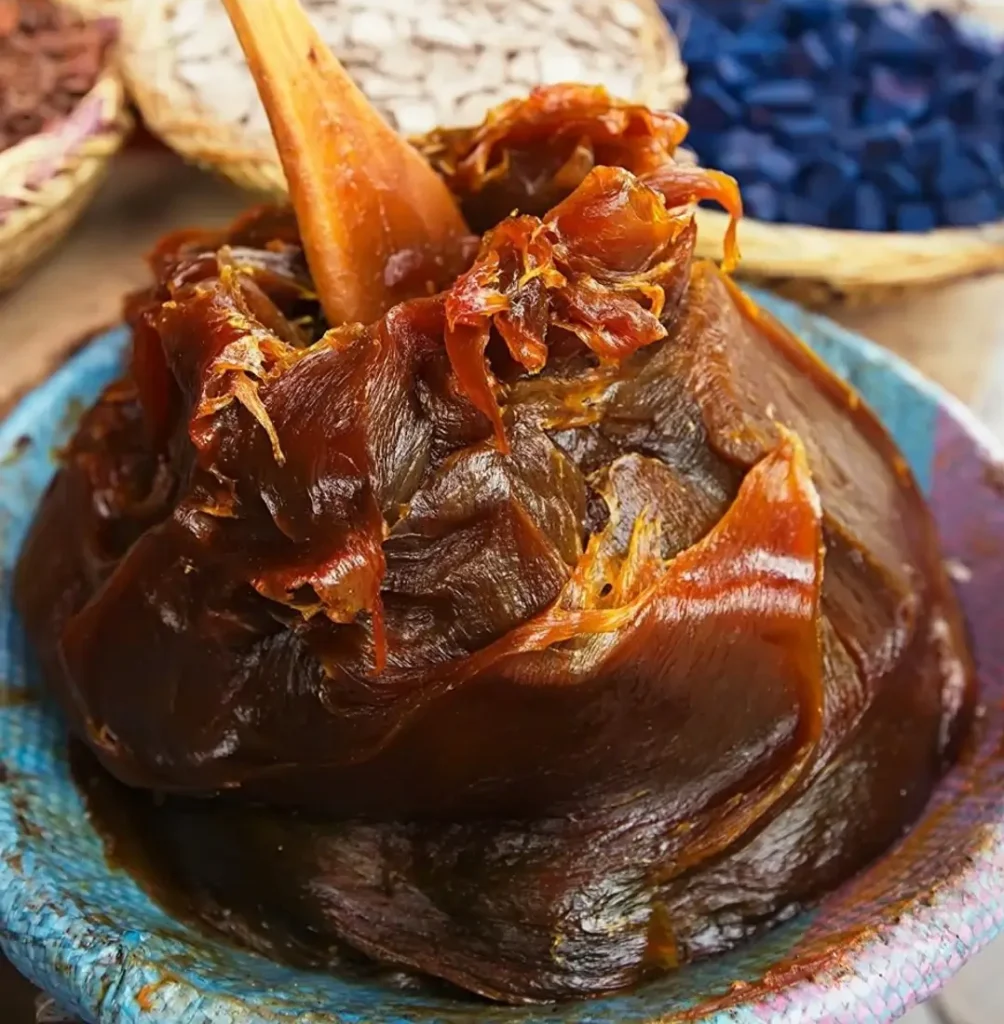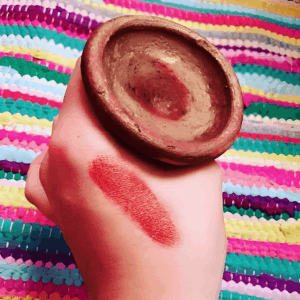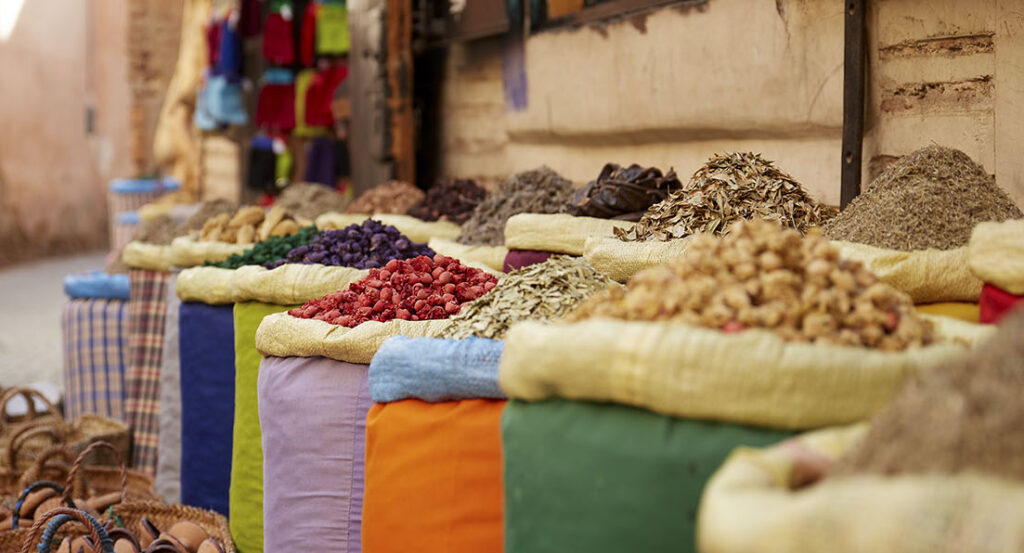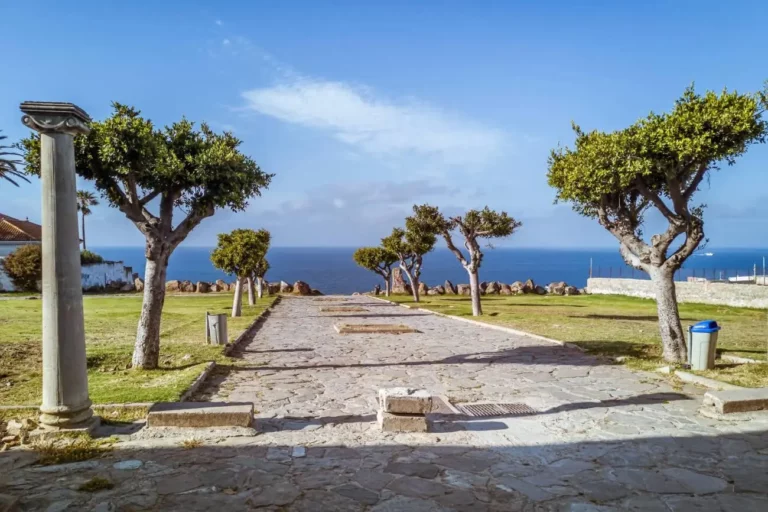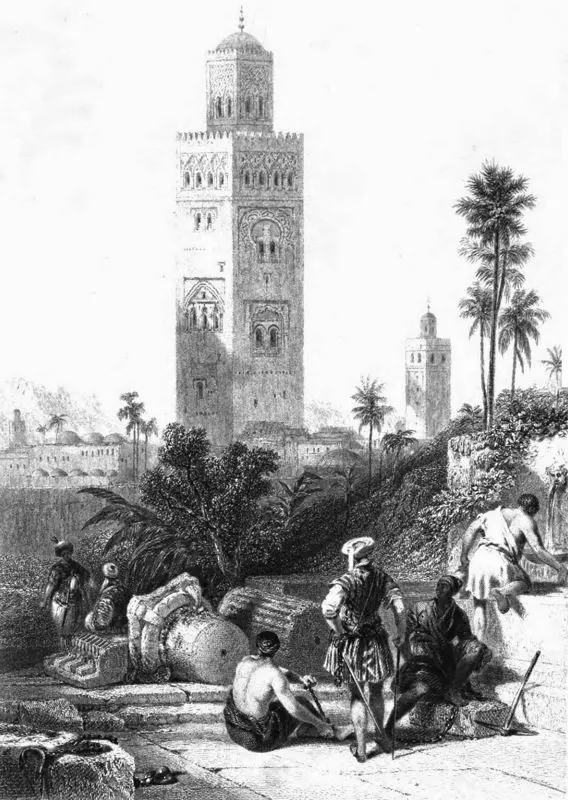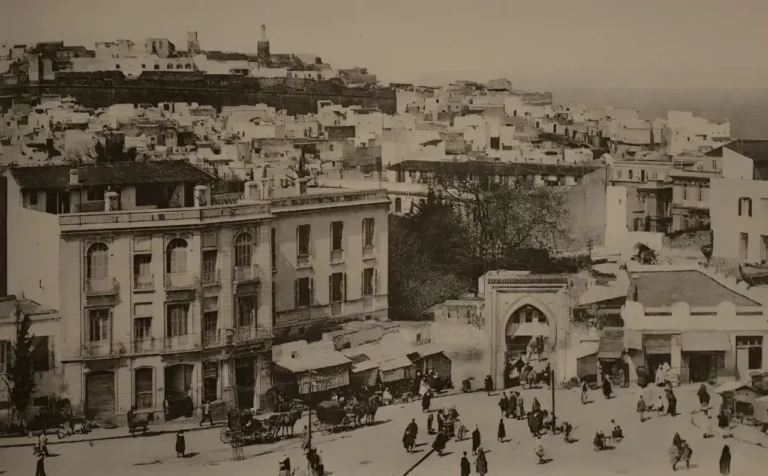Tangier, Morocco a place we dream of visiting or returning to again and again. Between its vibrant souks, enchanting medina, and characterful boutiques, it’s almost impossible to leave empty-handed.
We want to bring back a little bit of that magic, whether for ourselves or to pamper our loved ones.
While handicrafts are a must-see, Moroccan beauty products are true treasures to discover and offers a range of authentic skincare products made with natural ingredients. Here are the must-haves to pack in your suitcase.
I. Argan oil:

Morocco’s ultimate gold For centuries, argan oil has been considered essential thanks to its moisturizing and restorative properties. It deeply nourishes the skin, strengthens hair.
The oil is extracted from the kernels of the fruit of the Argan tree (Argania spinosa), which is native almost exclusively to Morocco. It’s often referred to as “liquid gold” due to its rich golden color, high value, and extensive benefits.
The argan tree is so vital to the ecosystem and economy of its region that the Arganeraie, the vast forest of argan trees, has been designated a UNESCO Biosphere Reserve.
Argan oil is packed with beneficial compounds, including:
Vitamin E (Tocopherols): A powerful antioxidant that fights free radical damage.
Essential Fatty Acids: High in Oleic Acid (Omega-9) and Linoleic Acid (Omega-6).
Antioxidants: Like Phenols and Carotenes.
Squalene: A natural component of human sebum, making it highly compatible with our skin.
For Skin:
Moisturises: Easily absorbs into the skin, providing deep hydration without feeling greasy.
Anti-Aging: Vitamin E and antioxidants help improve skin elasticity, reduce the appearance of fine lines and wrinkles, and protect against environmental damage.
Soothes Conditions: Can help alleviate symptoms of dry skin, eczema, and psoriasis.
Acne & Oily Skin: Its high linoleic acid content can help balance sebum production and reduce inflammation.
For Hair:
Hydrates & Repairs: Penetrates the hair shaft to restore moisture and shine to dry, brittle hair.
Tames Frizz & Flyaways: A few drops can smooth the hair cuticle.
Strengthens: Can help reduce split ends and breakage.
Promotes a Healthy Scalp: Massaging it into the scalp can help with dandruff and dryness.
For Nails & Cuticles:
Moisturises dry cuticles and strengthens brittle nails, promoting healthier growth.
What to Look For When Buying
To ensure you’re getting pure, high-quality argan oil:
Check the Ingredients: The list should say 100% Pure Argan Oil (or Argania Spinosa Kernel Oil). Avoid products with fillers, silicones, or fragrance if you want the pure stuff.
Packaging: Look for dark glass bottles (usually amber or cobalt blue). This protects the oil from light degradation.
Source: Opt for brands that support Berber women’s cooperatives, as this ensures ethical sourcing.
In summary, argan oil is a versatile, nutrient-rich oil from Morocco that is highly beneficial for skin, hair, and culinary purposes. Its status as “liquid gold” is well-earned due to its labor-intensive production and remarkable efficacy.
II. Prickly pear seed oil: the skin elixir of life
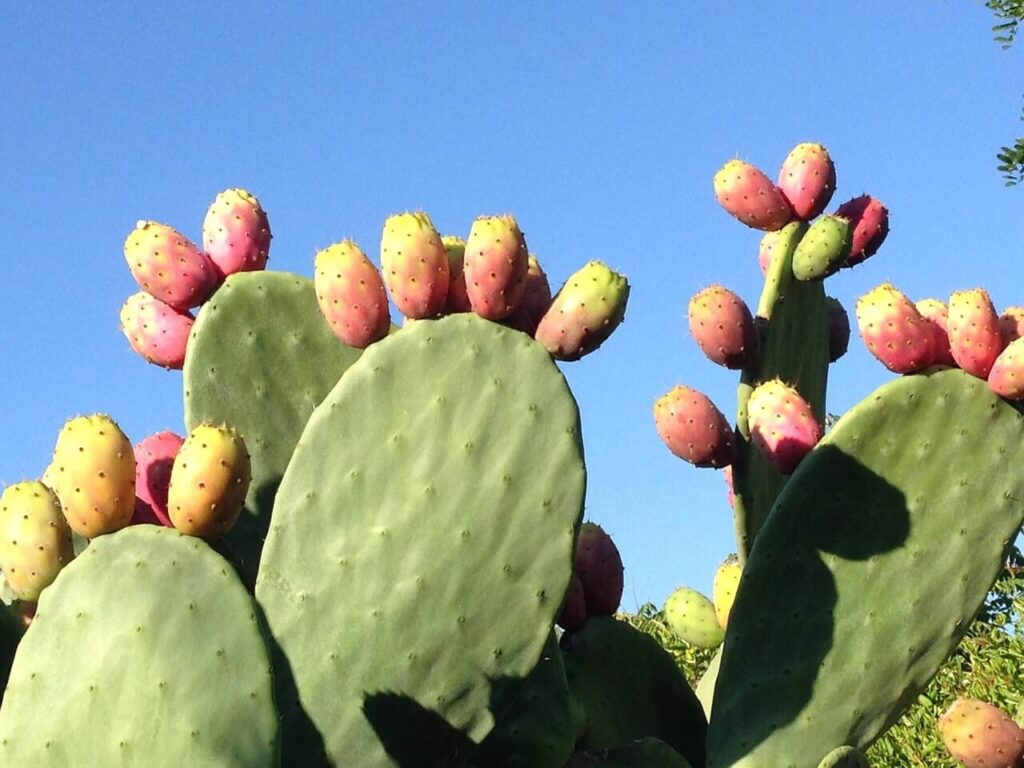
Renowned for its exceptional anti-aging properties, prickly pear seed oil is a true concentrate of benefits for the skin. Rich in antioxidants and essential fatty acids, it deeply nourishes, fights the signs of aging, and restores radiance and firmness of the skin.
also known as Barbary Fig Seed Oil or Opuntia ficus-indica seed oil, is a luxurious and potent plant oil extracted from the tiny seeds of the fruit of the prickly pear cactus.
It’s renowned in the beauty and skincare world for its exceptional rarity and efficacy. To give you an idea of its value: it takes approximately one ton of prickly pear fruits (about 300,000 individual fruits) to produce just one liter of this oil through cold-pressing. This incredible labor and resource intensity have earned it nicknames like “the green gold” of Morocco and one of the most expensive oils in the world.
How is it Made? The Challenge of Extraction
The extraction process is what makes this oil so rare and costly:
Harvesting: The prickly pear fruits are carefully hand-harvested, a tricky process due to their fine, hair-like spines (glochids) that can easily irritate the skin.
Deseeding: The flesh of the fruit is separated from the seeds. Each fruit contains dozens of small, hard seeds.
Drying & Cleaning: The seeds are thoroughly dried and cleaned.
Cold-Pressing: The oil is extracted by mechanically cold-pressing the tiny seeds. This method preserves the oil’s delicate nutrients, antioxidants, and vibrant color but yields a very small amount.
Key Benefits and Uses
Prickly pear seed oil is a powerhouse of active compounds, making it a superstar for skincare. Its benefits are often compared to, and in some aspects even surpass, those of argan oil.
Potent Nutritional Profile:
Extremely High in Vitamin E: It has one of the highest concentrations of Vitamin E (tocopherols) of any plant oil—almost 150% more than argan oil. Vitamin E is a powerful antioxidant that fights free radicals and supports skin repair.
Rich in Essential Fatty Acids (EFAs): It has a perfect balance of Linoleic Acid (Omega-6, ~60%) and Oleic Acid (Omega-9, ~20%). This helps reinforce the skin’s barrier, lock in moisture, and reduce inflammation.
Packed with Antioxidants: Contains high levels of Betalains (the pigments that give the fruit its color) and Sterols, which protect the skin from environmental stressors and have anti-inflammatory properties.
High in Amino Acids: The building blocks of protein and collagen.
For Skin: The Primary Use
Intense Anti-Aging: Its potent combination of Vitamin E and EFAs helps to dramatically improve skin elasticity, firmness, and reduce the appearance of fine lines and wrinkles. It promotes a plumper, more youthful complexion.
Deep Hydration & Barrier Repair: The oil is lightweight and absorbs quickly without leaving a greasy residue. It delivers intense moisture and helps repair the skin’s natural lipid barrier.
Brightening & Evening Skin Tone: The antioxidants help inhibit melanin production, which can fade dark spots, hyperpigmentation, and post-acne marks, leading to a more even and radiant complexion.
Soothing & Healing: Its anti-inflammatory properties make it excellent for calming irritated skin, reducing redness, and aiding in the healing of minor scars and stretch marks.
For Hair:
While less common than skin use, it can be used as a nourishing hair treatment to add shine, tame frizz, and strengthen hair strands, thanks to its high nutrient content.
How to Use Prickly Pear Seed Oil
A little goes an extremely long way due to its potency and price.
On Face: Use 2-3 drops for the entire face. Apply to clean, damp skin as a serum, either before or mixed with your moisturiser. It can be used both morning and night.
As a Spot Treatment: Apply a tiny drop directly onto dark spots or fine lines for targeted treatment.
On Hair: Use a few drops as a finishing oil to smooth ends and add shine, or apply as a pre-shampoo treatment.
IV.Rhassoul clay: a purifying and nourishing treatment

(pronounced “ra-sool”) is a natural mineral clay that has been used for centuries in Morocco for cleansing and beautifying the skin and hair.
The name “Rhassoul” comes from the Arabic word “rassala”, which means “to wash.” It is primarily mined from the Atlas Mountains in Morocco, and its use dates back to the 12th century.
Unlike other clays like bentonite, Rhassoul is a stevensitic clay. This unique mineral composition gives it distinct properties:
Source: It is a geological clay mined from ancient deposits in the Atlas Mountains.
Appearance: In its raw form, it’s a dry, flaky, brownish-grey powder.
Composition: It is rich in minerals like magnesium, silica, calcium, and potassium.
Key Benefits and Uses
Rhassoul clay is celebrated for its gentle yet effective cleansing and detoxifying abilities. It’s a staple in the traditional Hammam ritual.
For Skin:
Deeply Cleanses: Its particles have a high cation exchange capacity, meaning they are excellent at drawing out dirt, toxins, and impurities from the pores.
Gentle Exfoliation: The fine particles slough away dead skin cells without being abrasive, leaving the skin incredibly smooth.
Absorbs Excess Oil: It helps to balance sebum production, making it excellent for oily and acne-prone skin, but it’s gentle enough not to overdry.
Improves Skin Texture and Tone: Regular use can improve skin elasticity, soften the skin, and help with conditions like eczema and psoriasis due to its mineral content.
Softening: The high silica content helps to soften and smooth the skin.
For Hair:
Clarifying Shampoo: It deeply cleanses the scalp and hair, removing product buildup, excess oil, and environmental pollutants without stripping the hair’s natural moisture.
Adds Volume and Shine: By cleaning each strand without heavy detergents, it leaves hair feeling lighter, looking shinier, and with more body.
Soothes the Scalp: Its mineral content can help calm an irritated or itchy scalp.
How to Use Rhassoul Clay
Rhassoul is always used as a mask or paste that you mix yourself. It is not applied dry.
Basic Preparation:
Mix: In a non-metallic bowl (to preserve its properties), combine 1-2 tablespoons of Rhassoul clay powder with enough warm water, hydrosol, or rosewater to create a smooth, spreadable paste with a yogurt-like consistency.
Let it Sit: Allow the mixture to sit for a few minutes. It will thicken slightly as the clay fully absorbs the liquid.
Apply:
On Skin: Apply an even layer to clean, damp skin (face or body). Avoid the eye area. Let it dry for 5-10 minutes.
On Hair: Apply the paste to damp hair, massaging it thoroughly into the scalp and working it through to the ends.
Rinse: Rinse thoroughly with warm water. On the skin, it rinses off cleanly without leaving a residue. On hair, you may find your hair feels a bit “squeaky” clean—this is normal and a conditioner (often argan oil) is recommended afterward.
Popular Recipes:
Face Mask for Acne: Mix Rhassoul with a bit of raw honey and a few drops of tea tree oil.
Hydrating Face Mask: Mix Rhassoul with plain yogurt or aloe vera gel.
Body Scrub: Mix Rhassoul with a small amount of water and argan oil to create a paste, then use it with a Kessa glove in the Hammam for a powerful exfoliating experience.
What to Look For When Buying
Purity: Look for 100% Pure Rhassoul Clay with no additives.
Form: It is typically sold as a fine, flaky powder.
Color: It should be a brownish-grey color.
Packaging: Often comes in a bag or a plastic tub.
In summary, Moroccan Rhassoul is a gentle, mineral-rich clay that offers a deep yet non-stripping cleanse for both skin and hair. It is a cornerstone of traditional Moroccan beauty, prized for its ability to purify, soften, and improve skin texture without the harshness of some other clays.
VI.Rosewater: A Breath of Freshness for the Skin
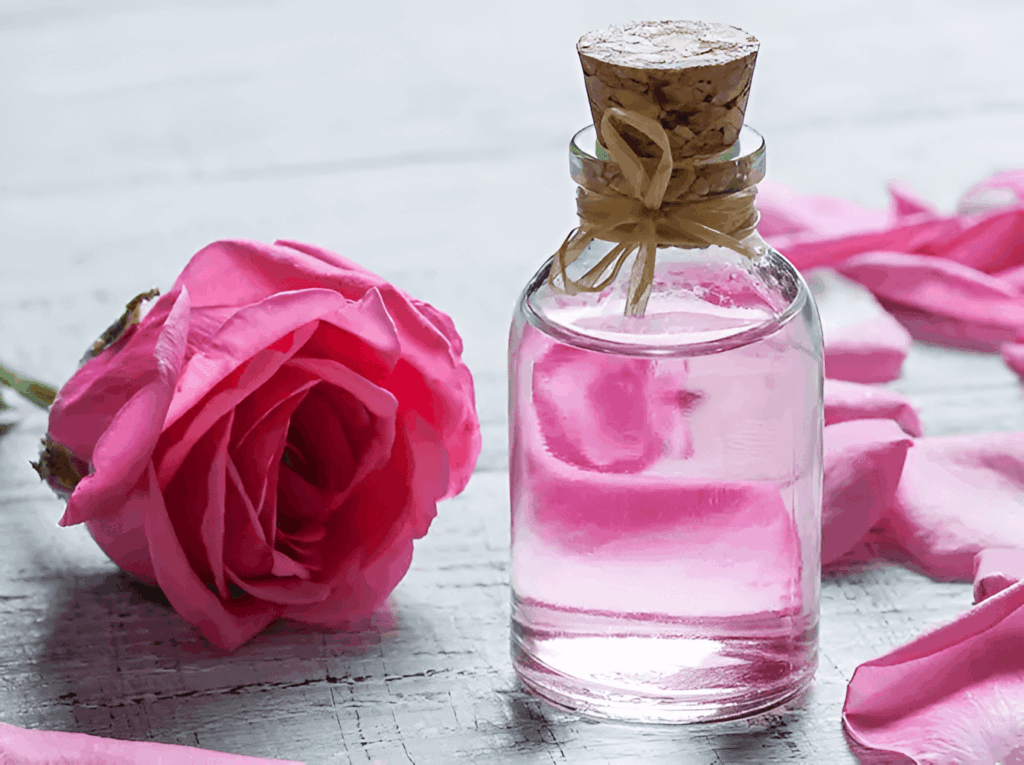
A fragrant hydrosol, the product of the steam distillation of rose petals to make rose essential oil. It is made specifically from Rosa damascena or Rosa centifolia petals, which are cultivated in the famed Rose Valley (Vallée des Roses) near Kelaat M’Gouna in the Dades Valley of Morocco.
The annual harvest in May is celebrated with a vibrant Rose Festival, highlighting the importance of this flower to the region’s culture and economy.


